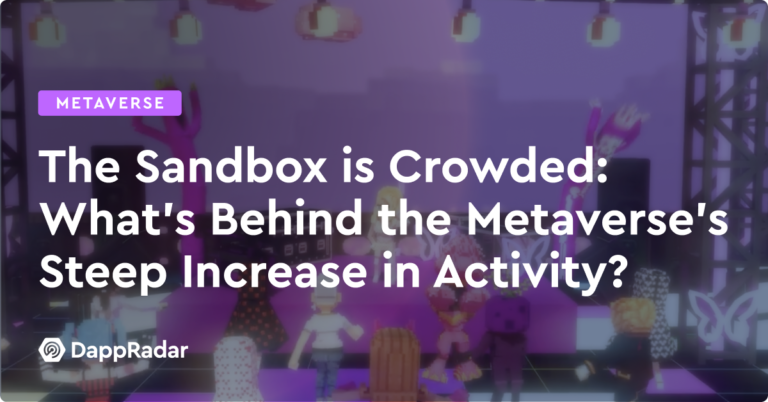As the product of the first decentralized application merger, Threshold (f.k.a. Keep Network / NuCypher) looks to create the de facto encryption network for blockchain and crypto, leading with a refurbished and highly scalable decentralized solution (tBTC v2) to bring BTC to the Ethereum network. Thanks in part to Keep’s previous iteration of tBTC and NuCypher’s expansive node network, Threshold aims to offer the first fully decentralized Bitcoin-to-Ethereum asset bridge, a space that is controlled by centralized custodial provider BitGo with help from some notable partners. While not easy, Threshold looks to leverage the merger as a means to overcome the seemingly impossible task.
Background
Keep Network
Keep Network was founded in 2017 by Matt Luongo and Corbin Pon as a privacy layer for public blockchains. KEEP utilized off-chain data containers that were able to interact with smart contracts. These off-chain data containers referred to as “Keeps” are managed by a distributed network of Keep operators, called “Signers”, who are randomly assigned portions of user data further protecting the information from unwanted access. By fragmenting and encrypting the data across multiple signers, access to the complete information would require multiple parties to collude and agree to combine their segments, which would seemingly run counter to their own interests. This system relies on Keep Network’s primary application, secure multi-party computation (sMPC), which ensures an individual signer cannot decode the information stored on the network. While Keep Network is at its core an encryption network, the most popular use case of the network is tBTC, Keep’s Bitcoin-to-Ethereum asset bridge.
NuCypher:
NuCypher was founded in 2015 by Michael Egorov and MacLane Wilkison with the goal of providing data protection and encryption that still allows users to move information and computation to the cloud securely. NuCypher’s core technology is known as Proxy Re-Encryption (PRE), which allows for end-to-end data encryption where a proxy entity transforms encrypted data from key to key (“re-encrypting”) without ever needing to decrypt the source data. PRE ensures data owners have the ability to grant and revoke access to private data. In 2017, NuCypher evolved the company into a blockchain-based operation integrating smart contract technology, threshold cryptography, and a token-based decentralized infrastructure model to establish PRE as a decentralized protocol. Today NuCypher’s PRE technology focuses on providing cryptographic access controls to distributed apps and protocols rather than traditional data-sensitive industries like healthcare and traditional finance.
Merger:
M&A Landscape:
In traditional finance, mergers and acquisitions make up the backbone of some of the largest banks and financial institutions’ bottom line, and serve as a catalyst for the exuberant bonus schemes sought by wall street investment bankers. According to Reuters, 2021 was a record-breaking year for M&A with 62,193 deals exchanging more than $5.8 trillion in value, up 64% from 2020 and topping the previous record of $4.55 trillion set back in 2007. The profitability of M&A deals coupled with the ever-growing number of blockchain-based projects today, it should come as no surprise that deal flow is expected to play a big role in crypto as winners gain share and resources are found to be more effective together than as competitors. But with an untraditional ownership model driven by the community rather than a board of directors, how does the M&A landscape look in the land of crypto?
As with much of crypto, the definition of a merger varies from announcement to announcement and often doesn’t look the same as Google buying a private startup for their tech or Sprint and T-Mobile combining together in hopes of taking share from AT&T and Verizon. Crypto M&A can come in many different flavors, and 2021 saw the space take its first steps into the world of M&A. Alameda Research’s acquisition of RenVM’s technology team was essentially a team-wide hiring spree bringing the Ren team into the Alameda fold and prioritizing the team’s focus on interoperability across the Solana ecosystem. Yearn.finance had multiple “mergers” announced this year which were better described as platform integrations rather than an outright combination or purchase of one another. On the acquisition front, Polygon has been active with their checkbook acquiring Hermez Network and Mir for $250M and $400M respectively.
When it comes to a true decentralized M&A, the club becomes even smaller. Recently Fei Protocol and Rari Capital agreed to consolidate their platforms in an effort to corner the liquidity provisioning space. Rari’s RGT token will be exchangeable for TRIBE at a rate of 10:267 with Fei Protocol assuming all of Rari’s liabilities associated with the $10M exploit of the platform back in May 2021. From a governance viewpoint, TRIBE and RGT holders were seemingly largely in favor of the merger with the proposal garnering a 90% YES vote from the Fei Protocol community and a 93% YES from Rari members. Now as the Rari and Fei communities move forward with their merger from a product and governance perspective, let’s dig into one of the earliest mergers in this space consisting of NuCypher and KEEP – enter Threshold.
Threshold:
Originally announced back in March 2021 under the code name KEANU (Keep And NuCypher), the merger of the two encryption platforms became the first merger of two decentralized protocols. The Threshold merger takes place at the code level of the respective protocols, referred to as a “hard merge” where both Keep and NuCypher as independent protocols cease to exist and the successor protocol, Threshold, goes on providing all the services that Keep/NuCypher previously provided, and looks to extend its services to become the platform for any form of threshold cryptography.
Combining code is one thing, but combining two large groups of stakeholders is another feat entirely. While the initial merger proposal was released in March 2021 the deal wasn’t finalized until June 11th when both Keep and NuCypher communities voted YES (78% KEEP / 100% NU) on RC0 Token Proposal. While the passed agreement is neatly titled RC0, the proposal actually went through 6 different iterations where members from both communities went back and forth on everything from names, exchange rates for predecessor tokens, and governance structures. Finally, the two communities came to an agreement on T6 Token Proposal which consisted of both parties gaining an equivalent share of the new Threshold network as well as the establishment of an independent Threshold DAO treasury. The biggest challenges that T6 Token Proposal set out to accomplish was (1) no token left behind, (2) minimizing the risk of “zombie” KEEP/NU tokens, and (3) establishing a strong risk management system for the successor DAO.
As part of RC0, the conversion rates for KEEP and NU tokens were set at 1:4.78 and 1:3.26 respectively. The rates were based on each tokens’ total supply after both protocols halted inflation, and resulted in each protocol representing 45% of the Threshold network. The initial supply for T was set at 10B with 10% reserved for the Threshold DAO. Now with the conversion rates and token name finalized, the real work could begin – determining DAO governance.
Governance:
Inspired by the success of Compound Finance, the Threshold team decided to model their post-merger governance structure according to the lending protocol’s Governor Bravo. The decision was made to establish a three-pronged system which included a bicameral DAO, representing the token holders (Token Holder DAO) and network stakers (Staker DAO), as well as an elected multisig council.
The bulk of governance control is given to the Staker DAO, however, each branch operates within a range of checks and balances. The two components of Governor Bravo, Token Holder DAO and Staker DAO, each have the ability to propose on-chain votes, delegate votes, and execute proposals. Token Holder DAO consists of T token holders, stakers, and those who have deposited their tokens into a coverage pool (a component of tBTC). On the other hand, Staker DAO consists of stakers with their voting power determined by their relative share of staked T tokens. As mentioned before, the majority of protocol governance lies with the Staker DAO, which makes sense as this group is focused on supporting the protocol network and its various services. Token Holder DAO on other hand is responsible for the more “capital markets” needs of the organization, including managing and deploying the DAO treasury and minting additional T tokens in order to limit any inflation risks.
Finally, the Multisig Council consists of 9 elected representatives, with 4 seats selected by NU token holders and 4 seats by KEEP token holders. The remaining seat is voted on by the combined communities. Each member is expected to hold their position for a year and actively contribute to the development of Threshold. There is currently no term limit on council members, yet seats can be revoked by a Token Holder DAO vote. The council’s governance power is focused on proposals with protocol-wide impact including staking rewards management and veto power, which is to be used as a failsafe for any detrimental proposals that are passed.
Merger Benefits:
Threshold brings together the strengths of both Keep and NuCypher, and avoids two of their biggest roadblocks. For Keep, the merger adds scale for the off-chain data storage network by increasing the number of network nodes from ~200 to over ~2,000. This increase in validators creates a more decentralized signer set which reduces the risk of collusion. NuCypher’s PRE on the other hand inherits an existing Keep-built application with usage in need of scalable security. Keep’s primary use case today has been their Bitcoin-to-Ethereum asset bridge (tBTC) which utilized their off-chain storage network to hold Bitcoin in a decentralized encrypted state, while the synthetic tBTC can be deployed on the Ethereum network. As part of the merger roadmap, Threshold plans to upgrade to tBTC v2 which brings all the original benefits of tBTC on a scalable network with lower costs and higher security.
tBTC and the Need for Bitcoin on Ethereum:
Bitcoin is the original DLT, the big bang of what we all today know as crypto. The problem (positive to some) with Bitcoin is that for the next generation of money, it’s not particularly “smart”, however, it is very secure. While PoW receives very mixed reviews depending on who you ask, the amount and cost of the “work” involved in Bitcoin’s consensus mechanism create an extremely secure digital currency with minimal risk of corruption. The Bitcoin Mining industry is a multi-billion dollar publicly traded sector and BTC itself represents ~40% of the total crypto market. While BTC was many people’s first investment in crypto, most eventually go deeper down the rabbit hole and transition to smart contracts where DeFi, NFTs, P2E, and all the other Web 3.0 acronyms reside. Security is traded for innovation, but while the crypto ecosystem has built decentralized bridges and side chains for every layer 1 today, there still has not been a truly decentralized connection between Bitcoin and the rest of the crypto world.
ERC-20 Bitcoin does exist, Wrapped BTC is one of the more popular implementations in DeFi, but wBTC along with 9 of the other top 10 solutions, are either centralized or operated through a hybrid model, which essentially is decentralization with a kill switch. The table below highlights just how centralized Bitcoin is on Ethereum with wBTC representing almost 4x the next nine platforms combined. Even more surprising than wBTC dominance, is the minimal amount of BTC actually deployed on Ethereum and other smart contract blockchains today. The total BTC held by the top ten solutions represents less than 2% of the total BTC in circulation today. This begs the question, do BTC holders not trust centralized systems or do they simply not want anything to do with the rest of crypto? Threshold is betting on the former. The merger of Keep and NuCypher makes tBTC v2 a viable competitor in the Bitcoin-to-Ethereum solution space offering a low-cost, permissionless, and decentralized alternative to wBTC and the other top ERC-20 implementations. The question remains, does the demand for a more decentralized BTC-to-Ethereum asset bridge even exists?
Conclusion/Roadmap:
Looking ahead, the Threshold team remains focused on launching tBTC v2 and taking a greater slice of the Bitcoin-to-Ethereum asset bridge pie with a current goal of $7B TVL by the end of 2022 – which would place tBTC comfortably behind wBTC as the second largest Bitcoin derivative on Ethereum. While DeFi is built on the concept of active assets the majority of Bitcoin holders seem comfortable with their current positions. The institutional investors increasingly becoming interested in crypto are all starting with Bitcoin, so perhaps this new cohort of investors are more inclined to deploy their Bitcoin on Ethereum or some other blockchain, but will they want to use a decentralized medium?
Threshold believes the demand is imminent in the next crypto cycle with the team envisioning their bridge architecture as the preferred method of bringing BTC to Ethereum. Additionally, the Threshold DAO is developing a stablecoin (thUSD) to complement tBTC with a compatible risk-off asset collateralized by tBTC. The team believes that thUSD could eventually support decentralized lending for real assets, such as a mortgage or car loans. Overall, the two communities seem to have come together smoothly and are now focused on making sure all the work of a decentralized merger actually pays off. While many in crypto may not have used either platform directly in the past, this fact is likely to change as Threshold looks to take share in the new year.
Source link






